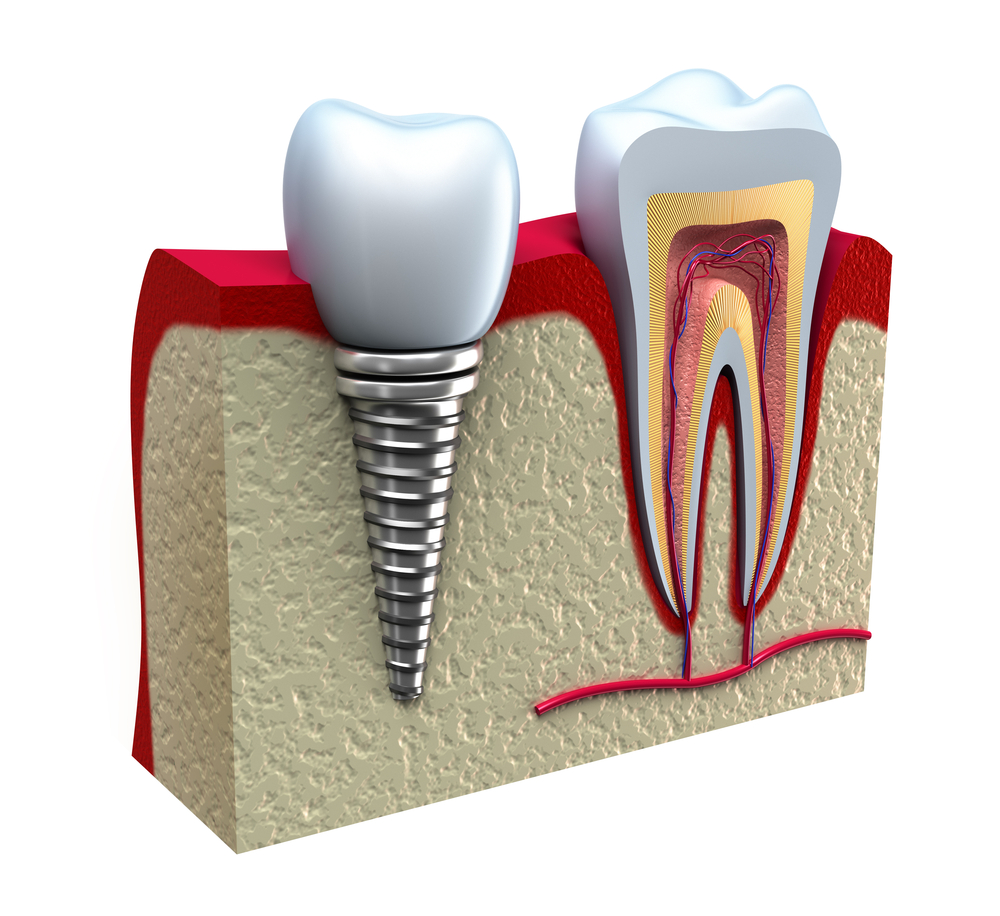Dental Services in Raleigh, NC: How Do Dental Implants Work?
At our local Raleigh, NC, dental clinic, we offer a range of dental services. Individuals with missing teeth due to injury, decay, or other reasons often benefit from dental implants. Implants provide a durable and natural-looking solution by restoring both oral function and aesthetic appearance, preventing bone loss and offering long-term stability.
Implants are a popular and effective way to replace missing teeth. They are titanium posts surgically placed into the jawbone to replace missing teeth. Through osseointegration, they fuse with the bone, acting as stable foundations. An abutment connects the implant to a prosthetic tooth, resembling natural teeth in appearance and function. Implants offer durability, prevent bone loss, and restore confident smiles.
Step 1: Dental Implant Placement
During implant placement, a titanium post is precisely positioned into the jawbone. This typically occurs under local anesthesia to minimize discomfort. We make a small incision in the gum to access the bone, drill a hole, and insert the implant securely. The gum is then stitched closed. This part of the process usually takes around 1-2 hours per implant. Following placement, a healing period of 3-6 months is required.
Step 2: Osseointegration
After dental implant placement, the titanium post’s surface fosters direct integration with the surrounding jawbone. This occurs through a biological bonding process called osseointegration, where bone cells adhere to the implant’s microscopic irregularities. Over a span of a few months, the bone envelops the implant, creating a sturdy connection similar to a natural tooth root.
This fusion ensures the implant’s stability and strength, enabling it to withstand the forces of chewing. Osseointegration’s success relies on the biocompatibility of titanium and proper healing, and it results in a secure foundation for the prosthetic tooth.
Step 3: Abutment Attachment
After successful osseointegration, a small connector called an abutment is affixed to the dental implant. This minor surgical procedure involves gently exposing the implant by making a small incision in the gum. The abutment is then screwed or cemented onto the implant, protruding above the gumline.
It serves as the link between the implant and the prosthetic tooth. The abutment ensures a secure foundation for the final prosthetic tooth, allowing for a natural appearance and optimal functionality.
Step 4: Prosthetic Tooth Placement
Prosthetic tooth placement is the final phase. Once the abutment is in place, a custom-made prosthetic tooth (crown) is attached. We take impressions of your teeth and create a crown that matches your natural teeth in color, shape, and size. This crown is then securely fixed onto the abutment, completing the implant process.
The procedure is typically straightforward and takes about an hour. The result is a functional, aesthetically pleasing tooth replacement that blends seamlessly with your natural smile. With proper care and maintenance, your implants can last a lifetime.
Implants offer unmatched stability and durability, functioning like natural teeth for biting and chewing. Furthermore, they help preserve jawbone health by stimulating bone growth, ensuring a lasting solution for tooth replacement. Call us at Rebecca E. Reeves DMD, PA to schedule your initial consultation.
Learn how do dental implants work is the your first step. We’ll help you to determine whether dental implants are right for you.

